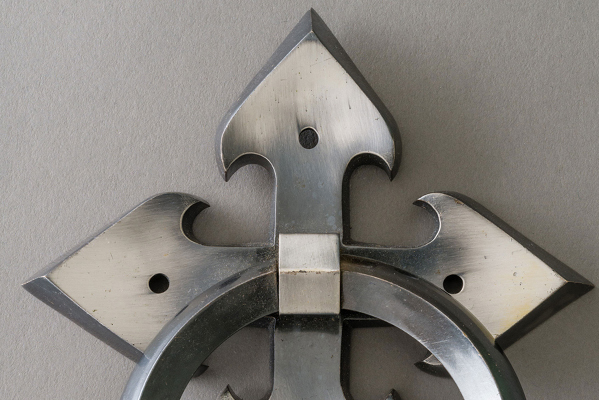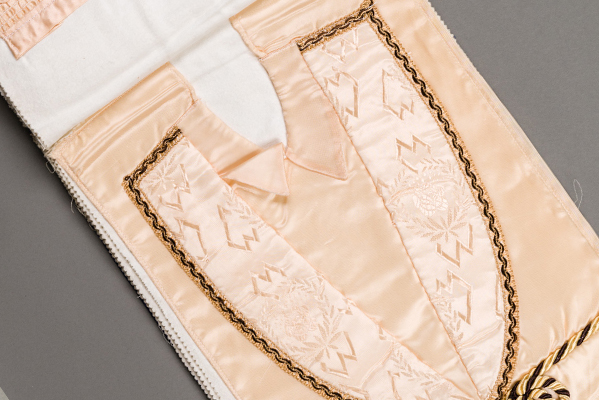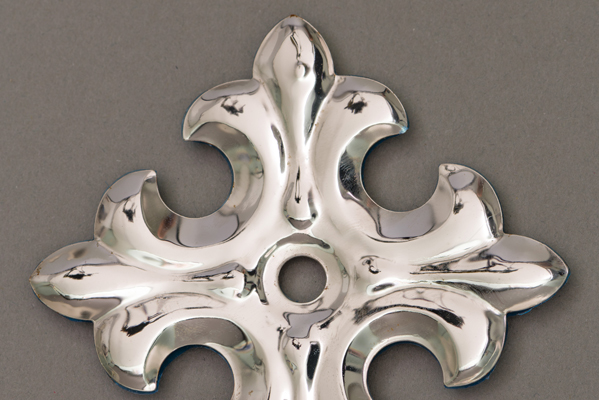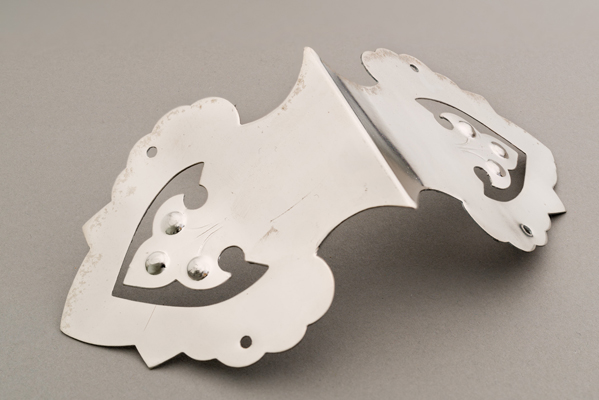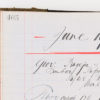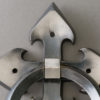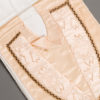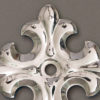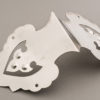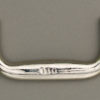Date: Circa 1920s
Material: Organic/ Paper
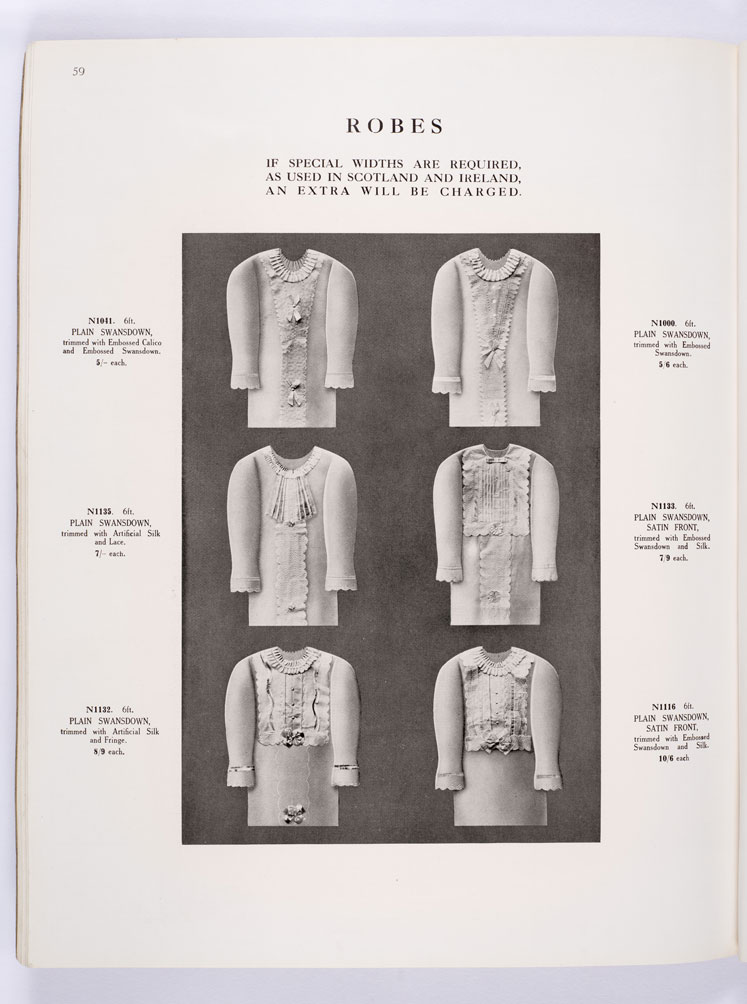
History
This page is from a Newman Brothers’ trade catalogue, dating from around the 1920s. The range of shrouds on offer was much more limited than that of the metal coffin furniture.
Ensuring that the deceased was well dressed in the coffin was paramount. This was because it was customary for the body to stay at home for up to three days after death, thereby giving family and friends a chance to see their loved one. It was also a premium advertising opportunity, where the funeral furnisher or undertaker could advertise his merchandise. They were judged on how well-presented and suitable the attire was. After all, material was matched to social status. Brushed cotton was chosen for the working classes, and silk and linen being used for more middle class robes.
By the start of the 19th-century, the shroud expanded in terms of design with distinct styles for men and women, boys and girls. Men’s shrouds often had a bow resembling a bow tie, and women’s shrouds usually had a high neck frill. We first see the use of swansdown, a popular material of choice at Newman Brothers, now replacing silk. The development of the shroud seems to have reached its climax in the 19th century, not developing to any great degree beyond the 1920s. Shrouds of the late 19th and early twentieth centuries bore a close resemblance to christening gowns or baby clothes. This was often the case because they appeared mainly in white, which was largely the case until 1970s and 1980s, where a broader range of colours were on offer. You can see some of these colours by clicking here to see what Newman Brothers were producing at this time.
Purple cashmere was available at the close of the 19th century for women, but it rarely got more adventurous than this.
Etiquette was everything, but the rules around funerals and funeral attire slowly began to break down after the First World War as attitudes to death began to change. The war had brought death to the nation on an unparalleled level. The idea of the Victorian funeral thus became inappropriate, especially when nearly half of the total dead of the British Empire had no known burial place. How, therefore, could you carry out the lavish Victorian funeral? You couldn’t, and this forced society to become more practical, but in doing so, it broke down the fixed etiquette of what was considered a respectable send-off. It took the pressure off, so to speak, and consequently saw the death of the Victorian funeral.
Our first evidence of Newman Brothers manufacturing shrouds comes in around 1914, from newspaper advertisements, where the company were advertising for ‘women to work in the shroud trade’. As they were originally brass founders, it’s likely that they focused solely on the metal side of the business before moving into producing the textiles, which were known as ‘cerements’. Cerements referred to gowns and robes, as well as the textile linings on the inside of the coffin. Newman Brothers probably began to manufacture shrouds not long after they set-up shop on Fleet Street, as it would make sense to become a one-stop shop, so speak.
Watch our video about shrouds here.
GALLERY
Use the arrows above to click through the images, and click on any image to enlarge.


